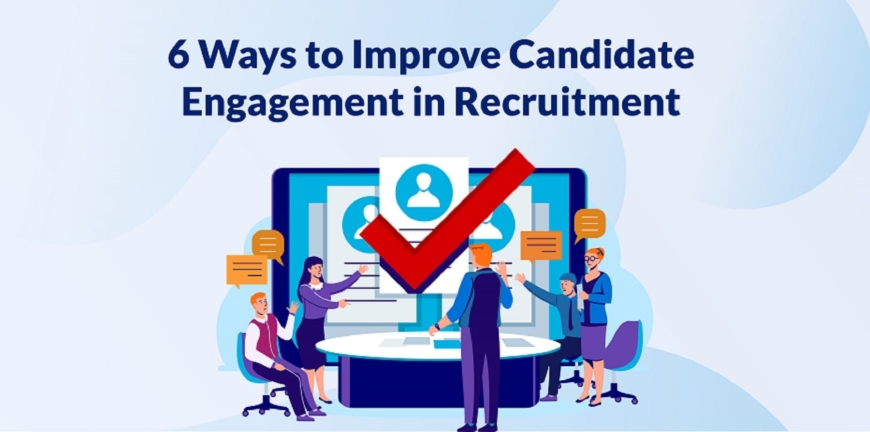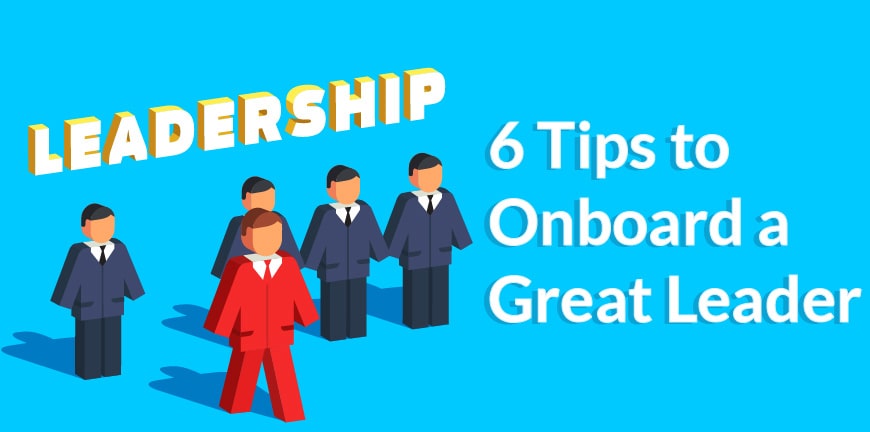
6 Ways to Improve Candidate Engagement in Recruitment
16/11/2023
The Most Important Payroll Software Features for Enterprises
22/11/2023The journey from darkness to light can be a challenging one, especially when we are led to believe that our assumptions are correct. Before the 1980s, researchers believed that organisations were extremely inertial and affected by external factors such as market competition and industry-specific contingencies. This theory, of course, only took into consideration the factors external to a company, ignoring the role that people within the company play in its development.
The Truth Emerges
But this took a roundabout turn in 1984, thanks to growing evidence against it. Theorists proposed the Upper Echelons Theory (UET), which championed that top leadership’s background, personality, and values could influence the strategic decision-making in a company and therefore lead to organizational outcomes, either in favour or against the organization.
This includes the top management team (or TMT). This is especially the case if leadership has higher discretionary power. In other words, it became a lot more about how leaders respond to internal and external factors that affect organizational outcomes, not just the factors themselves.
It is also proven that leaders with lower job demands are generally more rational and have the time to arrive at more logical decisions, whereas those with higher job demands, under job pressure, tend to make more decisions based on experience or bias.
What Does This Mean for HR?
And interestingly, scientific evidence has been in favour of this theory. What does all this lay emphasis on from an organizational perspective? Two things particularly:
(1) The need to have a good HR team that can manage the people who are hired and onboarded (because today’s employees could be tomorrow’s managers).
(2) the need to onboard the new leadership in a company in an effective manner.
Defining Good Leadership
Did you know that only 48% of employees view their company’s leadership as “high quality”? And this brings us to that very fundamental question: “Who is a great leader?”
Theories abound in leadership research, and many of them define leadership in their unique way. But one that truly stands out is the one provided by the scientist Prentice.
According to him, a good leader is someone who can accomplish a set of tasks through his assistants by motivating them to work and enlisting their services in such a way that marries their individual goals to the company’s objectives.
Another proponent of leadership, Daniel Goleman, gives some insight into a leader’s mind and way of working. According to him, a good leader must have inner focus to manage their emotions and understand their values and their intuitions very well.
They must have good outer focus too, to understand people and how they think, to ensure that the decisions they make are the best for the team and the company.
But every human being is different, and leaders are no exception. Successful leaders can be one of six types, as described by eminent scientist and psychologist Daniel Goleman.
6 Different Types of Great Leaders
1. Coercive Leadership
Directive or commanding leadership that tries to fix a problem as quickly as possible, by actually coercing employees to act in a certain way, is called coercive leadership. An example of this is a leader describing the steps that need to be taken in case of disaster management.
2. Authoritative Leadership
When you give your team goals to achieve, but you let them reach their goals the way they want, it can improve business outcomes in ways you cannot imagine. This is referred to as authoritative leadership. In this case, the goals are fixed, but the route is not. It is also referred to sometimes as visionary leadership.
3. Affiliative Leadership
In affiliative leadership, leaders aim to create personal connections between employees and managers, building a workplace where trust and harmony are paramount. In such a case, the leader is an active listener, resolves conflicts, and focuses on team member strengths to lead them effectively.
4. Democratic Leadership
A leader who invites active employee participation in decision-making is a democratic leader. He/she is someone who encourages discussions among employees to arrive at decisions that help the organisation grow. The leader is on hand anytime he sees there is a need for guidance and control.
5. Pacesetting Leadership
In pacesetting, the leader sets the tone of what he needs to see happen in the company. By setting the right example and showing how things need to be done, he sets high standards for himself and his employees, motivating them to work harder.
In such a leadership, leaders sometimes try to reward those who do best and eliminate those who are not performing well.
6. Coaching Leadership
Coaching leaders act just like coaches for a sports team. They consider who is performing well and who is not, and address each employee’s strengths and weaknesses, giving them work that brings out their strengths, meanwhile also training them to overcome their weaknesses.
Successful leaders are those who know not just one style, but multiple styles of leadership and how to alternate among them when managing the employees who work under them.
Now that you know of the different leadership styles, let us look at 6 ways to onboard great leaders in your company and how the leadership styles fit in.
What are the 6 Tips to Onboard Great Leaders?
1. The kind of leader you want depends on the kind of industry
Coercive leaders are most effective in industries such as healthcare, manufacturing, and construction. This is because there is a certain workflow that everyone must stick to and compliance that must be followed.
On the other hand, authoritative leaders work best in other industries where compliance is not a major issue, and there is a need for a vision to begin with. Startups and even medium to big organisations can use this ideal of leadership. Industries that are service-oriented and where creativity is a necessity will benefit from affiliate leadership.
2. If you have ‘great expectations’, let your new leader know
Be clear about the challenges the leader will face in the new role, whether it is as a result of internal or external factors. Explain clearly what those factors are and how they are affecting the company.
For instance, if you know that the management does not want active employee participation in decision-making, then a democratic style of leadership will not work. Also, if results need to be achieved where a team as a whole is not performing so well, then a coaching leader may be of greater help.
Lastly, always ensure that your plan has measurable goals, preferably SMART goals, to begin with. This helps the leader have the right expectations and plan before he/she begin.
3. Introduce them to the team they would manage ahead of time
As Ryunosuke Satoro said, “Individually, we are one drop; together we are an ocean. This quote emphasises the need for teamwork. For this to happen, though, your leader must know his team very well. Let your leader know who they are working with well in advance.
Let it not be a surprise to the leader when they start working together as employee and manager.
If your team is diverse, encourage the leader to respect this diversity. If your team has people with multiple skill levels, let your future leader know what each one’s set of skills is in advance. Try to discover any kind of biases as early as possible, and try to address them immediately.
4. Strategy may evolve, but have a working plan
Clearly distribute the plan ahead of time to everyone on the team, and remember that it is a collective effort. If the leader will be working with a manager, let the latter decide what meetings the leader will have to attend and the responsibilities they will have to shoulder, to begin with.
Also, assign a team coordinator, if possible, so that the leader will have administrative support when they start. This will also help them understand the best practices that are specifically followed in the company. Also, mention the stakeholders for different tasks within the company, so they have more clarity on it.
Write down your plan in an official document so that it stays on record. This also ensures that it becomes something the new leader can access if he/she want more clarity. This also helps the leader’s colleagues keep track of his/her progress.
5. Show them how it’s done; mentorship plays a crucial role
Having a mentor for the leader when they join, especially if the leader has not been in a very similar role earlier (not an easy proposition for any recruiter, but let us assume so!), can be a timesaver (for everyone), a lifesaver (for the leader), and a game-changer (for the company).
The mentor can quickly help the leader navigate common situations at work and how to handle them effectively. The mentor can also help the leader identify hidden skills and align them with company objectives effectively.
Lastly, the mentor will also help the leader identify the kind of leader he/she is, and if a pacesetting kind of leader, can then set an example by doing certain tasks himself and inspiring others to follow.
6. Ask for feedback
Let the leader know he is wanted and that his feedback is appreciated. Gather feedback from the leader whenever he/she has completed a certain module or phase of the onboarding process. Use this to keep perfecting the process over time.
For instance, if the leader is an authoritative one and you prefer a democratic leader for your company, give the leader a listen when explaining why you think an authoritative leader would work better for your company.
It’s Buried in Stone
King Arthur pulled the sword out of the stone to be crowned King of Britain. Metaphorically speaking, employee talent, too, is buried in stone.
A workplace also has talented individuals who can be so much more but are unable to capitalise on their expertise because of the lack of the right guidance, appraisal, or feedback. The road to great abundance begins with a good leader. We sincerely hope you find the right one!
Contact Us For Business Enquiry

Amit Saproo
Amit Saproo is the Head of Operations at ALP Consulting with nearly 17 years of experience in Executive Search, RPO, Leadership, and IT & Engineering recruitment. He leads nationwide recruitment programs across Technology, BFSI, and R&D domains, driving strategic hiring solutions for diverse client needs. Amit excels in building and managing high-performance teams that deliver scalable, end-to-end recruitment and consulting services.




